With its 306hp EA888 motor and all-wheel-drive, the VW Golf R Mk7 was a hoot to drive out of the box. Our definitive tuning guide demonstrates how to make what many consider to be the best Hot Hatch even better!
For most enthusiasts, Volkswagen’s 300ps (296bhp) all-wheel-drive Mk7 Golf R offered more than enough to get their juices flowing and pulses racing. With a sub 5-secs 0-60mph dash and 155mph (limited) top speed, it’s no wonder your average owner was happy to leave the extremely hot hatch totally stock.
Chances are, though, if you’re a Fast Car fan, then you’re not your average car owner. With that in mind, our VW Golf R Mk7 tuning guide will talk you through the various stages of upgrades available for the cult car. We breaking things down into the seven most important areas in order to keep things simple.
Remember, this was a high-end car from the factory, so if you’re planning any upgrades then we’d always suggest you opt for top quality parts over quantity. Leave the cheap add-ons, they’ll only cause you problems in the long run.
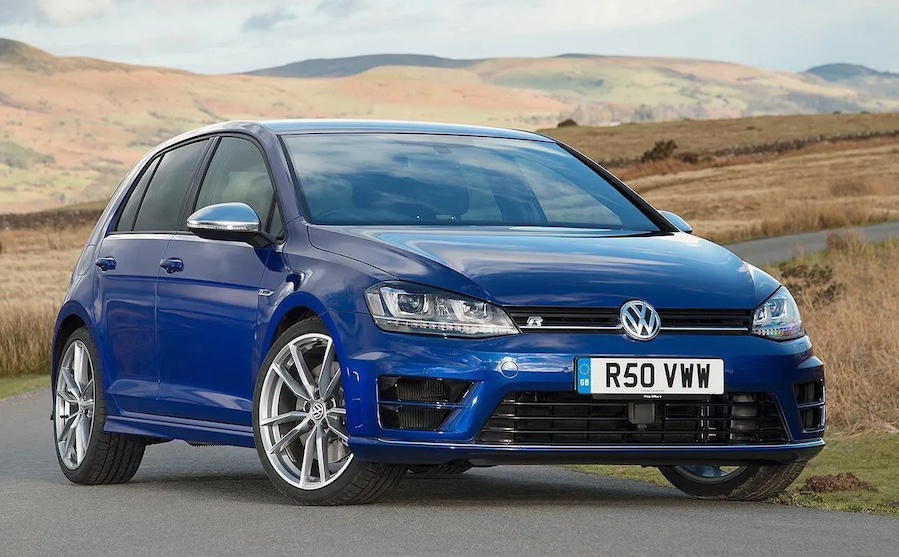
Volkswagen Mk7 Golf R History
The Mk7 Golf R’s foundations we were well a truly established in Volkswagen’s cracking Mk6 Golf R. It’s safe to say the Mk6 Golf R was a huge improvement over the somewhat uninspiring Mk5 Golf R32 it replaced. The sixth generation’s turbocharged four-cylinder EA888 motor may not have offered to same acoustics that made the Mk4 and Mk5 R32’s 24v V6 engine so popular. However, what it lacked in sound it more than made up for with power and tuning potential.
Needless to say, when the Mk7 Golf R arrived in 2007, it certainly had some big shoes to fill, but the all-new chassis and revised Gen 3 motor was more than capable of doing that. Despite being a brilliant all-rounder out of the box, though, many enthusiasts found the factory Mk7 R’s specification to be a bit too conservative and the temptation to tune all too easy. Luckily, you have this Volkswagen Mk7 Golf R Tuning Guide to help you on your way.

Volkswagen Mk7 Golf R Tuning Guide
The Mk7 Golf R offered very solid foundations for those power junkies looking to take things to the next level. The aftermarket is also flooded with go faster parts made to improve your R. With second-hand prices as low as £15,000, it’s worth checking out our Mk7 Golf R Buying Guide to see how easily you could get behind the wheel of one. Of course, once you find yourself in Mk7 Golf R ownership, then chances are it won’t take you too long to start looking at mods. And that’s where our VW Golf R Mk7 tuning guide comes in.
Feel free to use the jump links below to skip to the areas of tuning you’re most interested in.
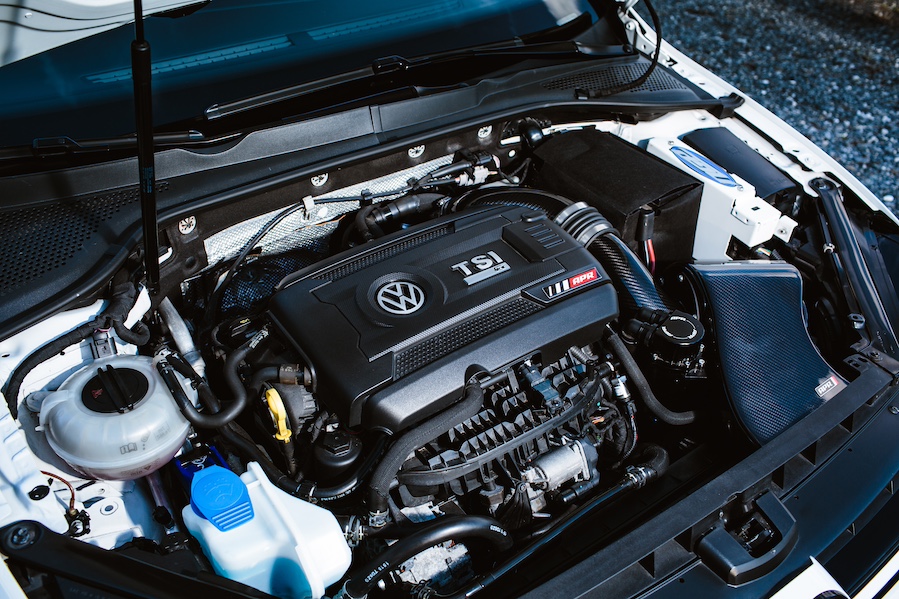
VW Golf R Mk7 Engine Tuning
We’ve seen all manner or engine swaps in Mk7s over the years, from in-line BMW V8s to the more common Audi 2.5T five-cylinder. However, when you can easily get 400bhp from the factory four-pot, we’d seriously suggest you stick with the trusty Ten 3 2.0T EA888. As for the engine’s limits? Well, there don’t really seem to be any.
Okay, in typical Volkswagen fashion, the team at Wolfsburg was quite conservative with factory power outputs. We were all too aware that there was far more power just waiting to be realised from that awesome EA888 engine. Why not read our definitive guide to Tuning VW’s EA888 engine?
When it comes to tuning the EA888, the various upgrades are best broken down into stages. A simple Stage 1 ECU flash will totally transform your car and is possibly the best bang-per-buck option out there. Many tuners will tell you that Stage 2 software and matched hardware will offer you more than enough power to compliment that Mk7’s chassis. Others, however, will claim you’ll never be truly happy until you reach Stage 3 status. Whatever you choose, make sure you do your homework first and always read people’s reviews beforehand.
Stage 1 tuning
Tuning the VW Golf R Mk7 for more power couldn’t be any easier. A simple Stage 1 software flash can see power gains of up to 90bhp. It will also work perfectly well with your factory exhaust and intake. It is wise to consider upgrading both of these areas at an early stage, though. Stage 1+ software is available to tailor your map to suit these hardware add ons.
Stage 2 tuning
When you consider Stage 2 software, then most reputable tuners will also suggest you fit a high-pressure fuel pump (HPFP). It’s a good idea to have upgraded at least your exhaust and intake at this stage, and we’d also suggest looking at a performance intercoolers as well. At this stage, your map will usually be set to run the car on a higher octane fuel.
Stage 3 tuning
In terms of power, rule of thumb says Stage 3 usually delivers around the 500bhp make. However, Stage 3+ can easily see 600bhp+ achieved if using the right spec turbo and internals. That’s right, you won’t be able to gain this sort of power with stock internals. This is very much big school in terms of the parts and labour needed, plus the bills you can expect to achieve this sort of power. Companies such as Revo do offer their own off-the-shelf Stage 3 kit for this engine, which it can install for you as well.
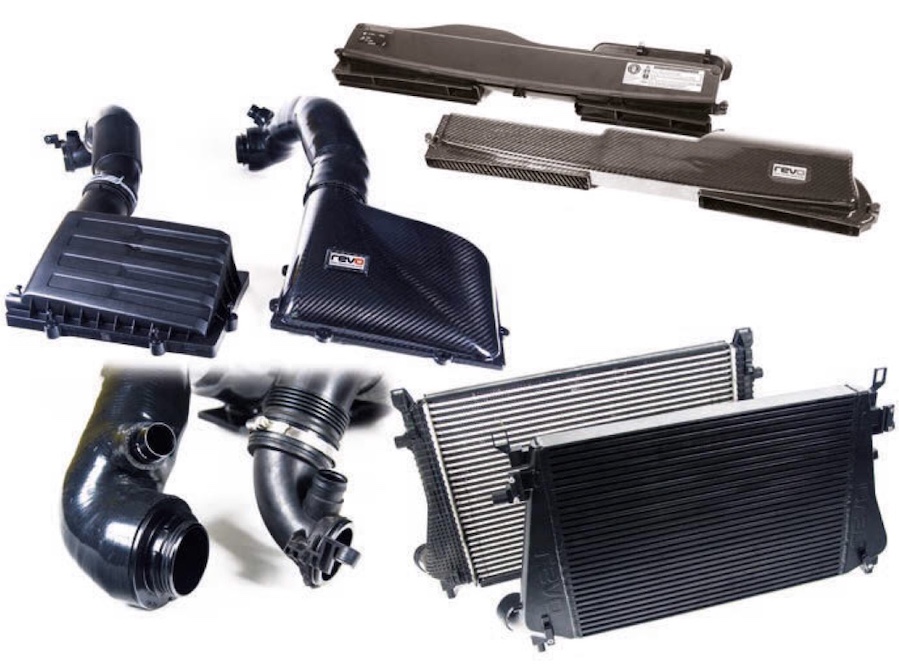
Engine tuning legalities you should be aware of
Back in the day you could get away with carrying out all manner of mods to you car, but the laws are much tighter today. It’s always worth checking the small print when you get to Stage 2 and above, because certain parts can be sold for ‘off-road use’ only. Aftermarket exhausts are certainly an area to watch out for, because some systems simply won’t meet emissions or noise restriction laws. Most companies are quite good at making you aware of this, but it’s always worth checking! If you’d like more information on the legalities of modifying your exhaust, check out our guide on exhaust downpipes and decats.
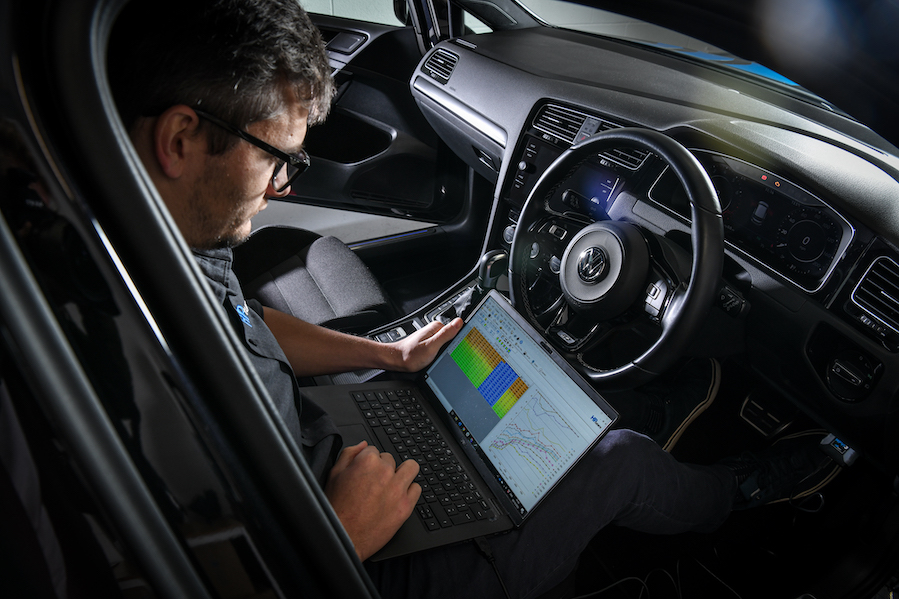
VW Golf R Mk7 Transmission Tuning
What’s transmission tuning, we hear you ask? Well, if you’re running a DSG transmission, then this is basically a way of mapping your gearbox software to keep up with your engine enhancements. Basically, it means faster gear changes, raised RPM shift points and the option for a more aggressive launch control, too. Basically, it will make your car shift like you’d wish it had done from the factory.
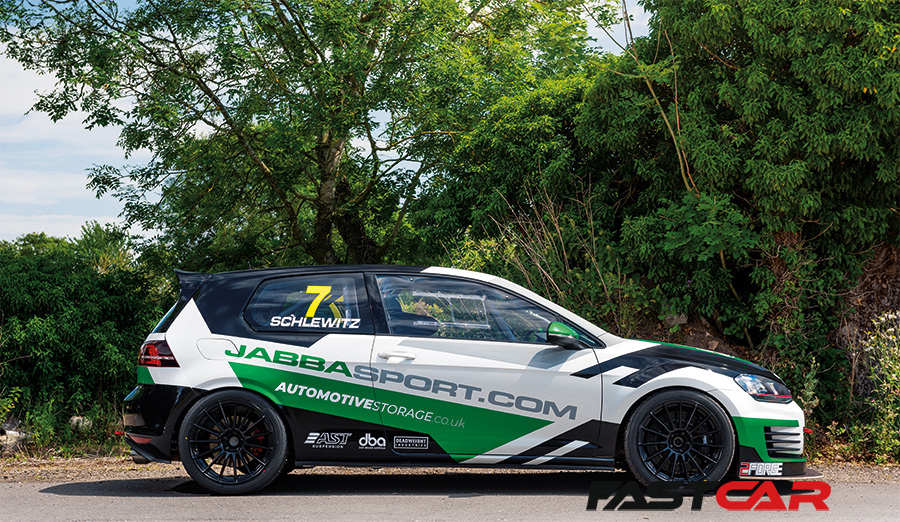
Suspension Upgrades
While the Mk7 Golf R may have been 20mm lower than the standard Golf, many couldn’t resist the temptation to go lower. Fully adjustable coilovers are still a great way to further reduce the car’s ride height. They also allow you to tailor your suspension to suit your driving style by adjusting bump and rebound settings. We’d certainly avoid buying cheaper ‘height-adjustable only’ versions specials. Bilstein, BC Racing and H&R are just a few of a reputable brands that produce fully adjustable kits for the Mk7. KW Suspensions in German can also offer kits that either complement the optional DCC (Dynamic Chassis Control) system or blank it off all together.
The Mk7’s chassis is so well engineered, that uprated dampers and springs should suffice in most cases. We would only look at upgrading to poly bushes if you’re planning to use your car very enthusiastically on the road or on track. The same can be said with upgraded suspension components like wishbones and the like. Companies such as 034 Motorsport and Verkline do offer a full range of suspension hardware components if you are going full-on with the chassis upgrades.
If you’re after ultimate ‘lows’ then Bilstein, KW & H&R offer ‘deep’ coilover kits, designed to allow you to safely drive your car at a very low ride height. If that’s still not low enough for you, then you could always opt for air suspension with Air Lift producing an off-the-shelf kit for the Mk7 platform.
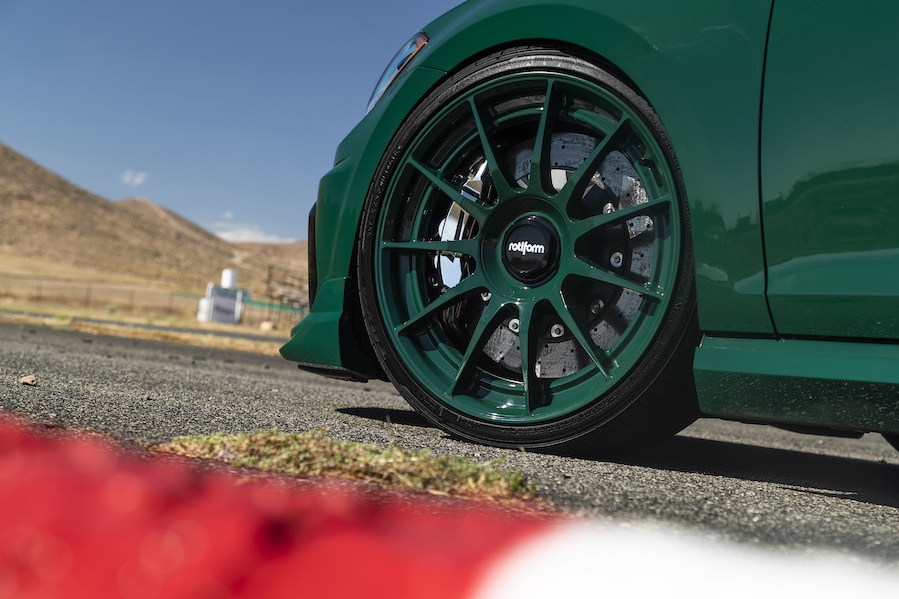
Brake Modifications For the VW Golf R Mk7
The Mk7 Golf R’s stock brakes (340mm discs front and 310mm rear) are not to be sniffed at when running stock power. However, the moment you start to increase horsepower then a brake upgrade should be considered at the same time. If you’re considering Stage 1 software, then a simple disc and pads upgrade should suffice. However, the moment you move to Stage 2 specification, then we’d suggest you consider a big brake kit (BBK). Brembo, EBC, Tarox and Forge Motorsport are just a few of the brands that offer off-the-shelf BBKs specifically for the Mk7. In most cases, these kits will come with six-pot calibers, larger discs with quick release bells, plus uprated bake hoses and brake fluid.
Finally, if you’re going all-out with your build, then companies such as RacingLine actually produce a direct-fit Carbon Ceramic Big Brake Kit for the Mk7 (above). However, with its Stage 3+ front set-up costing over £7k and the rears tipping the scales at over £5k, you need to have some pretty deep pockets. The best was never going to be cheap, though, right?
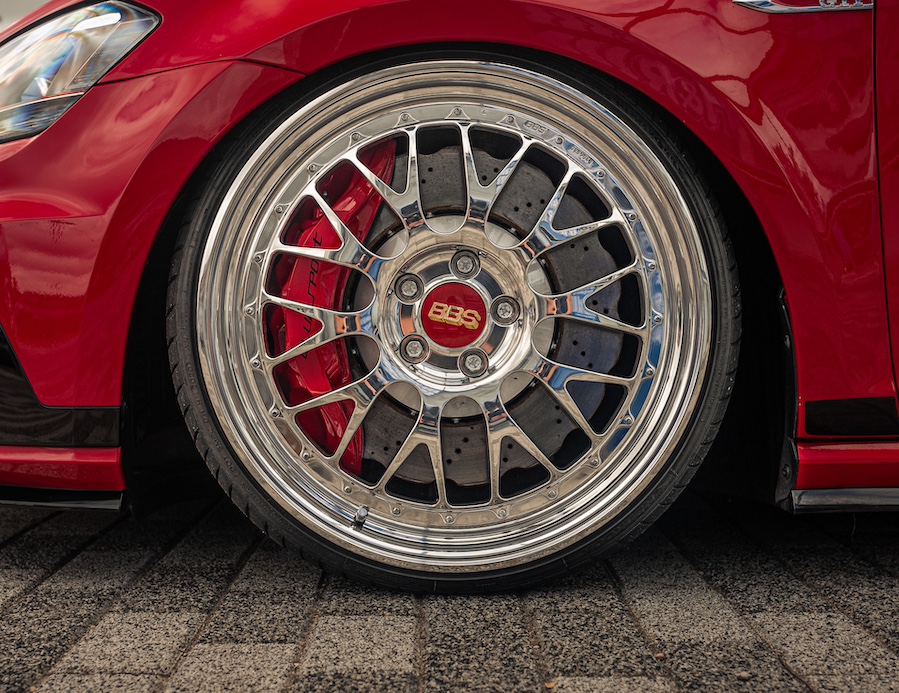
Performance Wheels & Tires
While the VW Golf R Mk7 came as standard on 18×7.5” alloys, many opted for the larger 19” ‘Pretoria’ wheel. If you’re planning to run the car on the circuit or not fussed about compromising ride quality on the road, then it will accommodate 20” wheels. However, we’d suggest you stick with a 19” wheel, especially if you plan a substantial reduction in ride height as well. There are plenty of Mk7 Golf R wheels to choose from on the aftermarket. If you’re building a show car, then many favor a staggered split rim. With the car being all-wheel-drive, we’d suggest you stick with a square (the same widths front and rear) set-up, though.
While there are plenty of brands to choose from, the cool kids usually opt for splitties from the likes of Rotiform or BBS. We’ve seen various OEM+ wheels used on Mk7s as well, from rare VW/Audi options to those originally found on Bentleys and Rolls Royces. Just be sure to do your homework to work out off-sets and whether the wheel’s PCD matches the Mk7’s 5×112 fitment.
If you’re tracking the car then forged mono blocks are a great option being both strong and light. In fact, there are some stunning single-piece wheels available for the Mk7 to suit all budgets. A 19×8.5” wheel should fit with no arch rubbing issues, but just be sure to check your off-sets before splashing the cash.
As for tires, if you’re running an 8.5×19″ then a 255/30 is a great performance option, but you could go for a slightly higher profile if you favor comfort over corners.
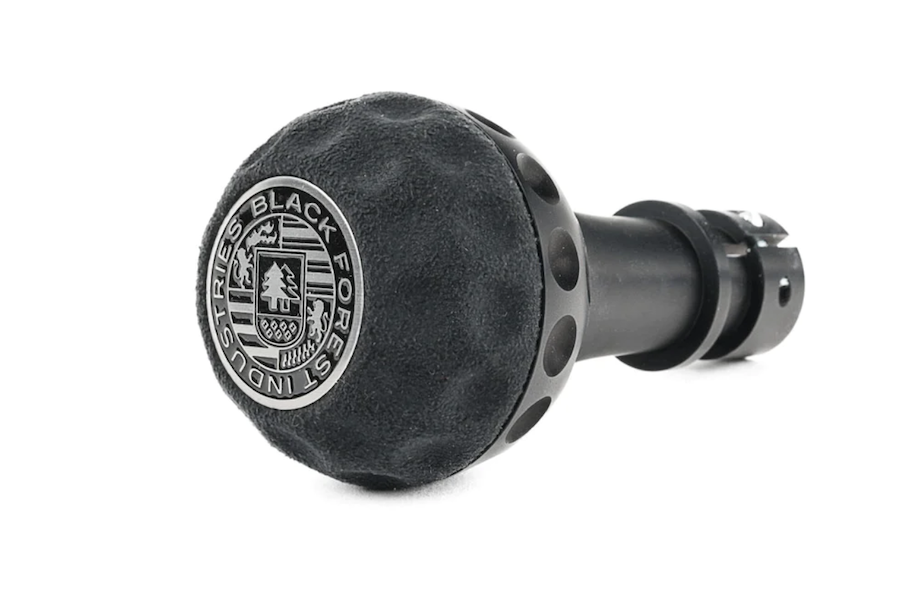
Interior Mods
The Mk7 Golf R interior is a nice place to be, especially if you opt for the full leather specification. However, in true Germanic style, the cabin could be classed as a little bit dull. Not to worry, though, as there are plenty of options to lift things. Companies such as Black Forest Industries offer a great range of retro gear knob upgrades (above) for both manual and DSG cars. RaclingLine produce its own slick, lightweight DSG paddle replacements. Renown will also sell you a retro-style steering wheel, if you’re happy to ditch your factory air bag. If you fancy going down the motorsport route, then obviously you can ditch the rear seats and fit a full or half roll age. Add some bucket seats and harnesses for good measure before hitting the track. These cars are certainly at home on the circuit.
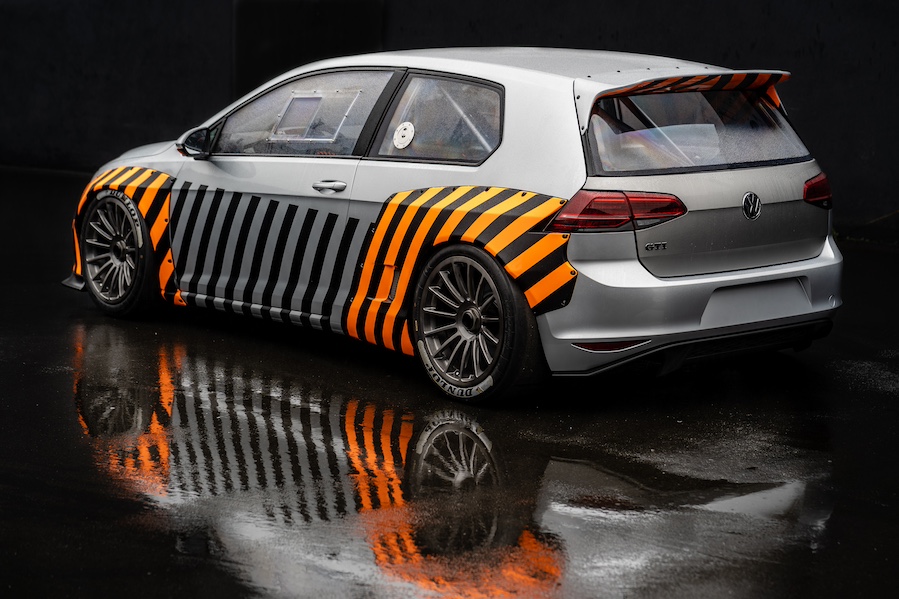
Styling Upgrades
While the Mk7 Golf R was pretty comprehensive as an overall package, some felt it was let down somewhat by its conservative styling. Okay, so this sleeper image appealed to many, but thankfully, the aftermarket is awash with all manner of body enhancements for the Mk7.
From splitters and spoilers, to wider from wings and deep diffusers, you can buy all kinds of bolt-ons to beef-up the appearance of your Mk7 R. If that’s not enough, then companies such as Rocket Bunny offer a bolt-on Pandem wide-bodykit for the Mk7 which will really get you noticed.
At the other end of the scale, some prefer to keep things classy and go for a more OEM+ approach by fitting the later, facelift Mk7.5 lights and bumpers.
There are no hard and fast rules, but hopefully our Volkswagen Mk7 Golf R Tuning Guide will help you make the right choices.
The post VW Golf R Mk7 Tuning Guide appeared first on Fast Car.
Leia Mais.